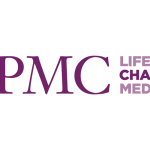 As the opioid epidemic continues to devastate the United States, the country is also battling the entwined epidemic of chronic pain, which affects more than 100 million Americans. Half of those individuals suffer from lower back pain, making it the most common type of chronic pain nationwide.
As the opioid epidemic continues to devastate the United States, the country is also battling the entwined epidemic of chronic pain, which affects more than 100 million Americans. Half of those individuals suffer from lower back pain, making it the most common type of chronic pain nationwide.
Since opioids are currently a go-to therapy for this condition, three UPMC physicians are looking for a solution to help patients manage their lower back pain while also decreasing the risk of addiction and maximizing the role of non-opioid therapies.
Dr. Howard Gutstein, professor of anesthesiology at the University of Pittsburgh School of Medicine, Dr. Gwen Sowa, director of the UPMC Rehabilitation Institute, and Dr. Ajay Wasan, vice chair for pain medicine in the UPMC Department of Anesthesiology are using existing data from multiple sources across the UPMC system to develop models to predict how patients with lower back pain will respond to treatment while also identifying which patients are most susceptible to opioid addiction.
“If we are able to understand which patients would respond to various lower back pain therapies and which patients are susceptible to addiction before considering opioids, we could guide their treatments to maximize pain relief while minimizing the risk of opioid dependency,” Wasan said.
Existing research also showed an association between protein biomarkers found in the blood, recurring genetic variations and a patient’s response to spinal injections for lower back pain. UPMC then conducted additional research that classified patient responses to those spinal injections into 10 categories based on their genetics.
Funded by a Bench at the Bedside grant from The Beckwith Institute, Gutstein, Sowa and Wasan are combining their expertise to analyze UPMC’s abundance of existing data and build new predictive models based on this research.
“Currently, our modeling accurately identifies the response of roughly 22 percent of all patients receiving spinal injections – those most likely to improve and those least likely to improve,” Sowa said. “This project focuses on finding more accurate data to predict how the rest of patients will respond to treatment while also addressing the question of opioid addiction.”
As the algorithms develops, the team is hopeful that the models can be utilized by physicians at UPMC and beyond to guide treatment decisions and reduce pain and opioid abuse.
“This project will help build the foundation for more personalized and precision medical care by selecting the most appropriate and effective pain treatments — and even help define more successful treatment strategies for individuals who have an existing opioid addiction,” said Gutstein.
Additional information about Bench at the Bedside grants and the projects they support is available on The Beckwith Institute website.









